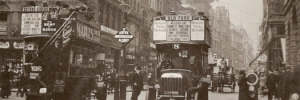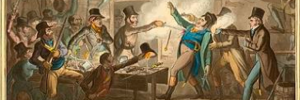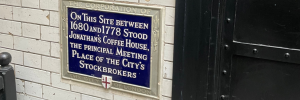Bath is a small and beautiful city and has been designated a UNESCO World Heritage site. From London, Bath is less than two hours train travel, making it an ideal location for a day or weekend trip. There is plenty to see without spending too much money. Here are a few suggestions:
Bath Abbey, BA1 1LT
The fan vaulted ceiling and wood carvings in the choir stalls are particular fine. Historical figures such as Samuel Pepys visited the Abbey and made their thoughts known. Bath Abbey suggests a donation of £2.50 to enter.
Bath Abbey Tower Tours
Go behind the scenes and see the Abbey from a different angle on a fully guided tour lasting c. 45 mins. There are 212 steps to the top of the Tower arranged in two spiral staircases with an opportunity to rest in between. Once up on the roof you will have the best vantage point in Bath to enjoy spectacular views of our beautiful city and see right into the countryside. Tower Tours available Monday – Saturdays. Ticket can be purchased from the Abbey shop on the day only. Tower tour ticket prices: £6 Adult, £3 child (5-15yrs). Visit Bath Abbey website
Bath Assembly Rooms, BA1 2QH
The Assembly Rooms is one of Bath’s finest Georgian buildings. Known as the New or Upper Rooms, the Assembly Rooms were designed by John Wood the Younger. When completed in 1771, they were described as ‘the most noble and elegant of any in the kingdom’. The rooms were purpose-built for an 18th century form of entertainment called an ‘assembly’. A large number of guests met together to dance, drink tea, play cards and listen to music – or just walk about. They are elegant public rooms which were at the heart of fashionable C18th Bath life and were the perfect venue for entertainment.
There are four rooms: the Ball Room, the Tea Room, the Octagon Room and a Card Room:
- Ball Room – The largest 18th century room in Bath. Dancing was very popular and balls were held at least twice a week, attracting 800 to 1,200 guests at a time. The high ceiling provided good ventilation on crowded ball nights and windows set at a high level prevented outsiders from looking in.
- Tea Room – This room was used for both refreshments and concerts in the 18th century, and was sometimes known as the Concert Room. During the evening entertainments there was an interval for tea, the cost being included in the price of a ball ticket. On Sundays there were public teas when admission cost sixpence per person.
- Octagon and Card Room – The Ball Room and Tea Room are linked by the Octagon Room which was originally intended as a circulating space which could also be used for music and playing cards. On Sundays, when cards were not allowed, visitors could listen to the organ, which once stood in the musician’s gallery. A new Card Room was added in 1777 but the architect is not known. Today this room is used as a self service cafe where you can try the famous Bath bun and butter for £2.75. Entry to the Assembly Rooms and Cafe is free.
The Circus, BA2 8SQ
The Circus is a unique Georgian achievement in urban planning and has attracted commentary from the time it was first built. They are three terraces of houses curved round a central circular space. Designed by John Wood the Elder, it was begun by him in 1754 and completed in 1768 by his son John Wood the Younger.
The most desirable houses were those on the north side, with their sunny south-facing fronts. William Pitt, by then Earl of Chatham and in his second term as Prime Minister, moved from his double-sized house in the south-western segment to one almost as large at no.11, while the spacious central house at no.14 was taken by John, 4th Duke of Bedford. For men such as these the Circus provided a second or third home. They were seasonal visitors, part of the ebb and flow of the haute monde between London, country estates and Bath. Permanent residents included those who catered to the seasonal flow, such as the artist Thomas Gainsborough at no. 17 and his sister Mary Gibbon, who became the chief lodging-house keeper in the Circus, running three houses there.
Pulteney Bridge, BA2 4AT
Pulteney Bridge is one of only four bridges lined with shops in the world. Built for William Pulteney by Robert Adams, the bridge was an attempt to connect central Bath to land on the other bank of the River Avon and make Pulteney’s fortune. In spite of its practical origins it must rank highly as one of the most romantic bridges in the world. It is best viewed from Parade Gardens park by the crescent weir.
–
Hazel Baker is a qualified CIGA Tour Guide who delivers guided walks and private tours in London. View all of Hazel’s walking tours.



